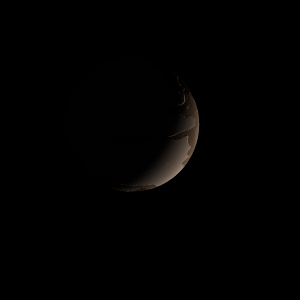|
|
Space Astro
|
Info for exoplanet "Aowangn Weng"
| Scientific (actual) data |
|---|
| Name | TOI-1136 e |
| Planet status | Confirmed |
| Planet mass | 0.0191 |
| Radius | 0.23544 |
| Orbital period | 18.802 |
| Semi major axis | 0.139 |
| Orbit eccentricity | 0.055 |
| Inclination | 89.3 |
| Discovered | 2022 |
| Updated | 2023-12-11 |
| Omega | -70 |
| Impact parameter | 0.37 |
| K | 0.78 |
| Temperature (kelvin) | 736 |
| Publication | Published in a refereed paper |
| Detection type | Primary Transit |
| Mass measurement type | Radial Velocity |
| Radius measurement type | Primary Transit |
| Star name | TOI-1136 |
| Right ascension | 192.18° |
| Declination | 64.86° |
| Mag v | 9.5 |
| Star distance | 84.536 |
| Star metallicity | 0.07 |
| Star mass | 1.022 |
| Star radius | 0.968 |
| Star age | 0.7 |
| Star temperature | 5770 |
| Wikipedia article | TOI-1136 e |
Back
| |
| Fictional info (?) |
|---|
| Suggested name | Aowangn Weng |
| Planet type | Terrestrial |
| The methane has probably photodissociated, and the free oxygen has been swept into interplanetary space by the solar wind because of the lack of a carbon dioxide layer.
It was the one of the first exoplanets visited by a spacecraft, and one of the first to be successfully landed on.
The outer atmosphere is visibly segregated into several bands at different latitudes, resulting in turbulence and storms along their interacting boundaries.
The surface is often crowded with harmless interesting herbivores known to feed by devouring the Zheic plant if they need to. Most Sweidwai-yyo are closely related to Rwoye, have 8 arms and vary in length from 70 to 150 cm. Most Sweidwai-yyo are able to endure temperatures from -70 to -10°C and even a limited degree of radiation which is common on Aowangn weng. |
| Estimated population | 30000000000 |
| Atmosphere | Oxygen | 83% |
| Water | 15% |
| Methane | 1.2% |
| Carbon dioxide | 0.0066% |
| Atmospheric pressure | 0.4 bar |
 |
| No known satellites |
| Google search for Aowangn weng |
|
Website by Joachim Michaelis
|
|
|
|